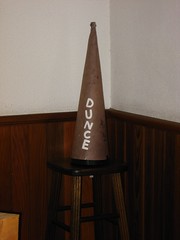 This is the LAST CHANCE to enjoy the Salem Saturday Market in 2009! Image by NatalieMaynor via Flickr
This is the LAST CHANCE to enjoy the Salem Saturday Market in 2009! Image by NatalieMaynor via Flickr
Hi Friends!
Saturday, Oct. 31, is the last day of the Salem Saturday Market for 2009!
Friends of Salem Saturday Market will be there holding a yard sale at our booth ~ our first big fundraiser. Swing by our booth on the northwest side of the Market to see the great stuff we’ve got for sale, at ridiculously affordable prices.
The money we raise Saturday will help get us through the winter months. Although the Market may be finished, our activities and events certainly are not! FSSM is a year-round organization, and we want to keep the momentum going that we’ve gained all summer. So come take a look at our booth, see what we’ve got for sale, or just say hi. We’ll miss seeing all of our great members & supporters every week!
We’re not the only ones with good deals Saturday ~ a lot of the vendors will be selling garage-sale items, too. You’ll find even more great stuff than usual!
Bring the kids, too, for trick-or-treating and a costume contest. There’s even a costume contest for dogs!
We hope to see you you down there – rain or shine! – to bid farewell to a wonderful Market season!

![Reblog this post [with Zemanta]](http://img.zemanta.com/reblog_e.png?x-id=74d7331e-d409-4ef5-bfcc-f5e56f9f7926)

![Reblog this post [with Zemanta]](http://img.zemanta.com/reblog_e.png?x-id=a129a762-6082-4e97-a4f5-27d7b45150e9)


![Reblog this post [with Zemanta]](http://img.zemanta.com/reblog_e.png?x-id=6c111062-1306-4b4b-ae59-8f61e846835f)



